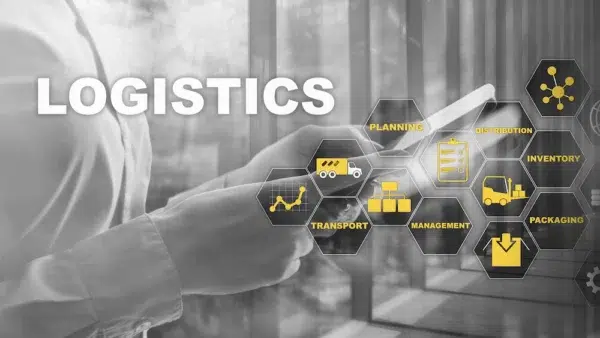
Vet Your Carriers
July 16, 2024

It may obvious to state that cargo thieves work 24-7 to steal our cargo. However, this statement should inform and guide every aspect of a broker’s business: be aware and act aggressively knowing that every step in the carrier onboarding process is absolutely necessary to prevent cargo theft.
This vetting process costs extra time and money but offers the highest level of scrutiny, similar to a lawyer’s due diligence review, exceeding standard broker requirements. In addition to using programs like RMIS, Carrier Assure, and Carrier 411, brokers should take further steps to verify carriers. A carrier passing this stringent vetting, with a good credit score, can be certified as a thoroughly vetted carrier.


Disclaimer: This article represents personal opinion only and not legal advice and sets no legal or other standard for carrier vetting since it is intended to be informative and educational only.
Creating a Robust Carrier Compliance Program (CCP)
The first step is to ensure your CCP is based on an accurate, up-to-date understanding of applicable laws. Brokers must fully understand the laws, regulations, and policies governing carriers in both Canada and the U.S., including:
- Department of Transportation (DOT)
- Internal Revenue System (IRS) or Canada Revenue Agency (CRA)
- National Highway Traffic Safety Administration (NHTSA)
- Federal Motor Carrier Safety Administration (FMCSA)
- Ministry of Transportation – Transportation Safety Division (Ontario) (MTO)
- Corporate Profile Report (or equivalent from State/Provincial Government Registry)
Even if your Carrier Compliance Program is current, remember that cargo thieves continuously try to circumvent the laws. Thus, it’s advisable to have a transportation lawyer review and update your CCP annually. Implement these updates to ensure carriers meet the latest compliance standards.
Final note: It’s crucial to understand and integrate applicable laws into your CCP.
Subscribe!
Subscribe to receive the latest articles, newsletters, whitepapers, and industry news directly to your inbox.
"*" indicates required fields
The Corporate Profile Report
After considering the relevant, up-to-date laws, start the vetting process by requesting key documents from the carrier and government databases. Create a “know your carrier” rule by independently obtaining corporate records from the appropriate provincial or state government body, similar to the “Know Your Client Rule” used by lawyers.
In Ontario, corporations must register with the provincial government, making their registration number, address, and directors’ information publicly available. Obtain the Corporate Profile Report directly from the government office, not from the carrier. This ensures the carrier has complied with some of their corporate obligations.
The Corporate Profile Report is Invaluable
While the Corporate Profile Report may contain false or outdated information, it is a good starting point to understand a corporation’s background. We’ve seen cases where a report appeared valid, but a cargo thief had taken over the carrier. Therefore, do not rely solely on this report for vetting.
Cross check to detect falsity
The Corporate Profile Report helps verify information by cross-checking it with transportation records. Always review the identities of directors and officers carefully to spot known cargo thieves, such as those involved in previous cargo claims or non-payment issues.
Run the addresses on Google maps
The registered address of the carrier is crucial. Check it on Google Maps to see if it’s a truck terminal or just a post office box, the latter being a red flag. Also, compare the addresses of the corporation and its directors. Google these addresses to ensure they make sense.,
In summary, cross-check the corporate name, registration, and addresses with the information provided by the carrier. Look for matches or discrepancies, ensuring the registered name matches the carrier’s records and that emails are consistent. Create a checklist and verify everything thoroughly.
Red flag discrepancies? Consider a DNU
If there are any red flag discrepancies, consider a DNU. The corporation should have up-to-date registrations and be in good standing with tax filings and corporate returns. Note any issues carefully. Do you want to do business with a corporation that isn’t current with its filings, is in tax arrears, or lacks an inspectable terminal?
Pull the Carrier’s CVOR
For this third step, cross-check the carrier’s safety and governmental records, such as Ontario’s CVOR, with the Corporate Profile Report. This helps identify discrepancies and red flags. This method ensures the carrier’s identity and helps detect cargo thieves, who rarely can create matching records.
CVOR Level 1: A Synopsis
Brokers can order a CVOR Summary (Public Abstract – Level 1) for carriers online using the provided link. This summary covers the carrier’s performance over a specified 24-month period and includes essential information like the company’s name, address, operating license number, and more. Some key points, marked with asterisks, should be cross-checked with the corporate profile report for accuracy. Other safety-related details are highlighted in yellow for review. Order here.
CVOR Level 2 (Long Form)
The CVOR Level 1 provides a basic overview but isn’t sufficient for thorough due diligence. Instead, brokers should request an up-to-date Long Form CVOR from carriers, which offers more comprehensive information. Only carriers or their agents can order the Commercial Vehicle Operator Record (Level 2). It takes time for carriers to obtain and produce this record.
The Long Form CVOR reveals a carrier’s true status from both business and safety perspectives, including accident details, charges, and convictions over a five-year period. It offers a chronological compilation of safety performance, allowing brokers to assess compliance accurately. The link to order: Commercial Vehicle Operator Record – Carriers Only.
There’s also a pilot project for real-time access to CVOR records, but it’s limited to carriers and their representatives. The link to the Online Carrier Record website. provides further details and online services related to helpful commercial vehicles and carriers.
Cargo theft is a constant threat, with thieves employing increasingly sophisticated methods to target shipments. Implementing a rigorous vetting process within a Carrier Compliance Program serves as a strong defense. By identifying red flags and discrepancies across corporate profiles, carrier records, and government safety reports, you can catch potential issues before they escalate. Timely actions like placing a Do Not Use (DNU) order can prevent customer loss, the need for police reports, cargo theft, and costly insurance claims.
This article was co-written by TRAFFIX’ employees Heather Devine, CLO; Michael Meeks, VP Enterprise Risk Management; and Sarah Geisel, VP of Legal.


